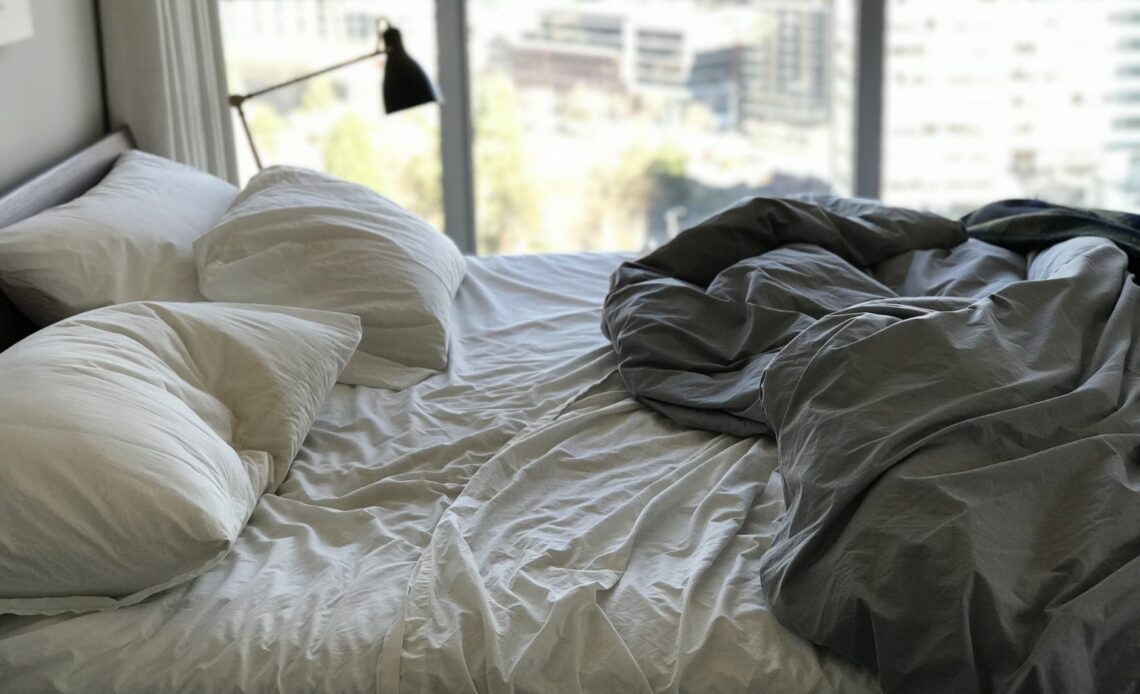If you’ve scheduled a bed bug extermination for your NYC apartment, you’re already taking the most important step toward solving the problem. But before the exterminators arrive, there’s one critical piece you can’t skip: preparation.
Properly preparing your home not only ensures the treatment is effective — it also helps prevent reinfestation. NYC apartments, especially those in high-density buildings, require a thorough and strategic approach to get rid of bed bugs once and for all.
Here’s your complete guide to getting your space ready for extermination day.
Why Prep Matters
Bed bugs are expert hiders. They wedge themselves into cracks, furniture joints, clothing, and electrical outlets. For treatment to work — whether it involves heat, steam, or insecticides — these pests need to be fully exposed.
If your home isn’t properly prepped:
- Bed bugs may escape the treatment
- Eggs may survive and hatch later
- The exterminator may need to reschedule
- You may incur additional service fees
Step-by-Step: How to Prepare for Bed Bug Treatment
✅ 1. Remove and Bag All Soft Items
Bag all fabric items in clear, sealable plastic bags, including:
- Bedding, pillows, sheets, comforters
- Towels, curtains, rugs, bath mats
- Clothing from closets, drawers, laundry hampers
Important:
Do not move items into another room without sealing them. You risk spreading bed bugs to unaffected areas.
✅ 2. Launder Everything — On High Heat
After bagging your items:
- Wash everything in hot water (120°F or higher)
- Dry on high heat for at least 30 minutes
High heat kills both live bugs and eggs. Immediately after drying, seal clean items in new plastic bags until after treatment is complete.
✅ 3. Empty Closets, Dressers & Nightstands
Bed bugs often hide in furniture. Empty:
- Dressers, nightstands, and desks
- Bedroom closets and under-bed storage
- Bookshelves and storage bins
Place all small items into sealed bags or plastic containers for treatment or laundering. Avoid cardboard boxes — bed bugs love them.
✅ 4. Move Furniture Away from Walls
Move beds, couches, dressers, and other furniture at least 12–18 inches away from walls so your exterminator can access the baseboards and treat behind and underneath items.
If possible, dismantle bed frames — especially wooden ones. Bed bugs often hide in screw holes, joints, and frame crevices.
✅ 5. Vacuum and Declutter
Vacuum your entire apartment, especially:
- Around the baseboards
- Inside closets
- Under and around furniture
- Mattress seams and couch cushions
Dispose of the vacuum bag (or empty the canister) immediately, sealing the contents in a plastic bag and throwing it out outside your apartment.
Declutter floors, surfaces, and storage areas. The fewer hiding places bed bugs have, the more effective the treatment will be.
✅ 6. Unplug Electronics and Cover Items as Needed
While bed bugs rarely infest electronics, exterminators may ask you to:
- Unplug TVs, computers, and appliances
- Remove clutter from around electronics
- Cover delicate items if heat or steam is used
Always follow the specific instructions your exterminator provides, especially for heat treatments.
✅ 7. Make Arrangements to Leave During Treatment
Most bed bug treatments require that you, your family, and pets vacate the apartment for several hours (typically 4–6 hours, depending on the treatment type). Check with your exterminator for exact timelines.
Also plan to take:
- Small pets (including birds, reptiles, and fish tanks)
- Houseplants
- Any food or medicine that isn’t sealed
After the Treatment: What to Expect
Once treatment is complete, your exterminator may provide post-treatment instructions, including:
- When to re-enter the apartment
- When to unpack and reassemble furniture
- When follow-up treatments will occur (often 2–3 weeks later)
- Preventative measures going forward
Expect to continue seeing dead bugs or mild activity for a few days after treatment — that’s normal. However, if you continue to see live bugs after 10–14 days, a follow-up visit may be needed.
Need Help? We’ll Guide You Every Step of the Way
At [Your Company Name], we don’t just show up and spray. We provide detailed prep instructions, customized treatment plans, and ongoing support to make sure your home stays bed bug–free.
Our team works throughout NYC — from Manhattan high-rises to Brooklyn brownstones — and understands the unique challenges of exterminating bed bugs in the city.
Need a printable prep checklist? We’ve got you covered.
Need help bagging or prepping? Ask about our full-service prep support.
Book Your NYC Bed Bug Treatment Today
Don’t let bed bugs take over your space. With the right prep and professional treatment, you can reclaim your home and peace of mind — fast.
📞 Call now or request a free quote online.
🛏️ Discreet, effective, and affordable bed bug removal across NYC.
Would you like a downloadable PDF checklist version of this prep guide for your site? I can create that too!
Here’s the fifth and final blog post based on your prompt list:
Your Rights as a Tenant: What NYC Laws Say About Bed Bug Infestations
If you’re renting in New York City and suddenly discover a bed bug problem, you’re probably feeling frustrated — and wondering: Who’s responsible for getting rid of them? The good news is that NYC has clear laws that protect tenants when it comes to bed bugs.
In this post, we’ll break down your legal rights, what your landlord is required to do, and what steps to take if you’re dealing with an unresponsive property manager or building owner.
Are Landlords Responsible for Bed Bugs in NYC?
Yes. Under New York City Housing Maintenance Code, landlords are legally responsible for eradicating bed bugs in their rental units and common areas.
This includes:
- Apartments
- Hallways
- Lobbies
- Laundry rooms
- Shared storage spaces
Landlords must take immediate action once they are notified of a bed bug problem — and they must use a licensed pest control professional.
What NYC Law Says (in Simple Terms)
Here are the key points from the NYC Housing Maintenance Code and New York State laws:
📌 1. Landlords Must Eradicate Bed Bugs Promptly
Once notified, a landlord has 30 days to address the issue, but in practice, they should act immediately to prevent the spread.
📌 2. Landlords Must Disclose Bed Bug History
As of 2010, landlords in NYC are required to provide bed bug infestation history for the past 12 months to prospective tenants before lease signing. This includes infestations in the unit itself and the building as a whole.
📌 3. Tenants Must Cooperate With Treatment
Tenants are responsible for preparing the unit for extermination and following the exterminator’s instructions. This usually includes laundering clothes, decluttering, and allowing access to affected areas.
📌 4. Bed Bugs Are Considered a “Class B” Violation
Under NYC law, bed bugs are classified as a hazardous condition. If a landlord fails to address the issue, HPD (Housing Preservation & Development) can issue a violation and impose fines.
What to Do If You Find Bed Bugs in Your Apartment
If you suspect or confirm an infestation:
✅ 1. Notify Your Landlord in Writing
Email or text is okay, but a written letter or email creates a stronger paper trail. Be sure to include:
- The date you discovered the issue
- Signs you’ve noticed (bites, stains, sightings)
- A request for immediate professional extermination
✅ 2. Document Everything
Take clear photos or videos of:
- Bed bug bites
- Bug sightings
- Evidence on furniture or bedding
Also, keep copies of all communications with your landlord or property manager.
✅ 3. Cooperate With Treatment
Follow the prep instructions your landlord or pest control provider gives you. You’re legally required to allow access to your unit and take reasonable steps to help eradicate the problem.
✅ 4. Contact 311 If Your Landlord Won’t Act
If your landlord refuses to address the infestation or delays treatment, call 311 and file a complaint with HPD. You can also:
- File a claim in Housing Court
- Request a city inspection
- Report the issue to your local tenants’ association or Legal Aid
Can a Landlord Charge You for Bed Bug Treatment?
In most cases, no — especially if the infestation wasn’t caused by negligence or violation of your lease.
Unless there is clear evidence that a tenant caused the infestation (such as bringing in infested furniture), landlords in NYC are responsible for treatment costs.
Pro tip: If your lease includes language making tenants pay for pest control, it may not be enforceable under NYC housing law. A housing lawyer can help review your lease.
Bed Bug Disclosure: Know Before You Sign
Landlords are required to provide a Bedbug Disclosure Form (HPD Form) before you sign a lease. Ask to see:
- Bed bug history for your unit
- Building-wide infestation records
If the landlord fails to disclose, this could be a violation — and could give you grounds to break the lease or seek legal remedy if an infestation occurs shortly after moving in.
Living in NYC? Stay Informed and Protected.
NYC renters have strong protections when it comes to bed bugs — but that doesn’t mean enforcement is automatic. Knowing your rights and documenting every step can make all the difference if you’re dealing with an uncooperative landlord.
And if you’re a landlord or property manager? Staying compliant not only avoids legal trouble — it protects your tenants and your reputation.
Need Help With a Bed Bug Infestation?
Whether you’re a tenant looking for a reliable exterminator or a landlord needing a building-wide inspection and treatment, our NYC-based bed bug experts can help.
✅ Licensed & insured
✅ Discreet treatments
✅ Tenant-friendly service
✅ Legal documentation available
📞 Call today or request a free consultation online.
🛏️ Bed bug solutions that work — without the legal headaches. We recommend bed bugs extermination nyc.

